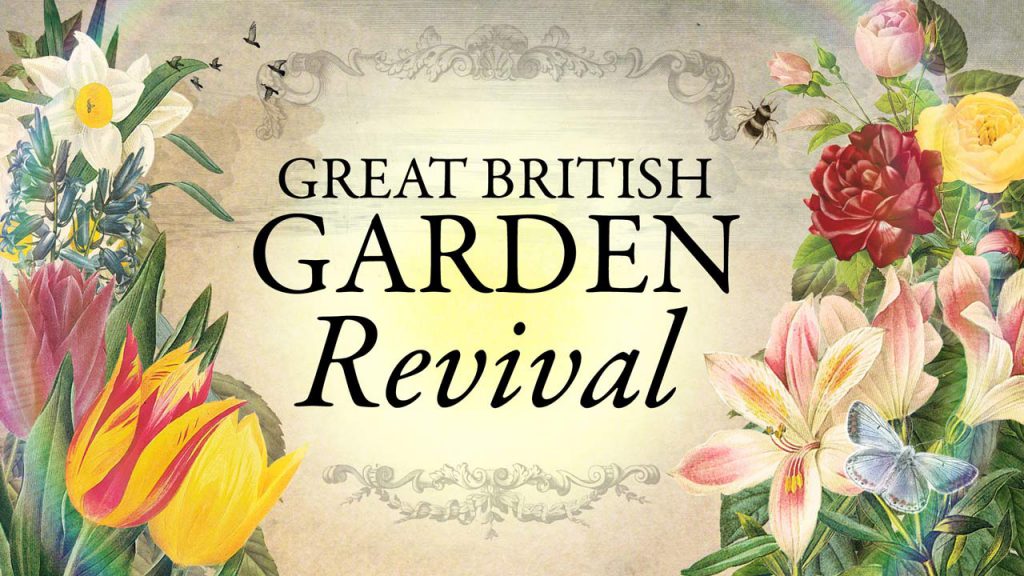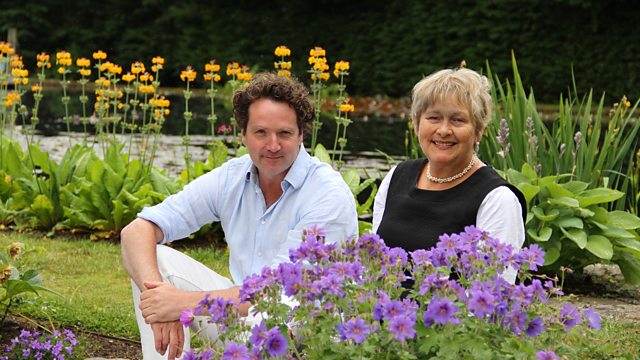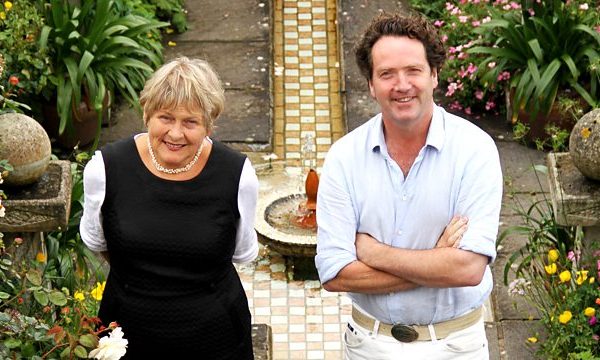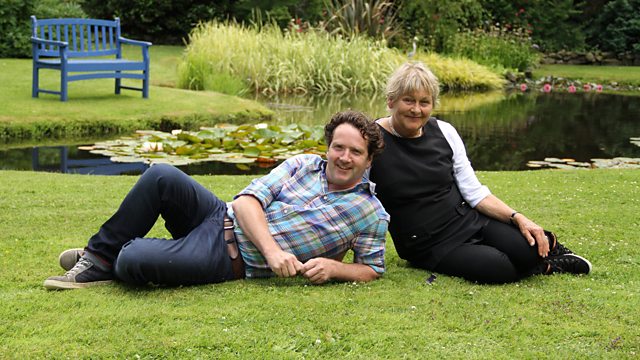Great British Garden Revival episode 7: Charlie Dimmock campaigns to put ponds back in gardens. She finds out the importance of ponds for wildlife and takes the plunge in a new style of water gardening – the swimming pond. Charlie also finds out how a community in east Yorkshire has come together to breathe new life into their village pond. The lakes, small ponds and water features of Nottingham Trent University are the starting point for her revival, and Charlie gives her step-by-step guide to building a wildlife pond and bog garden, from the initial design stage right through to planting up.
Chris Beardshaw wants to return a Victorian curiosity, the stumpery, to our gardens. Similar to rock gardens but created from upturned tree stumps, logs and roots, stumperies were created to display the spoils of intrepid Victorian plant hunters. On his revival Chris discovers how fern fever swept the nation in the 19th century. He meets a man in north Wales who is as fascinated by ferns as he is and sets off on a woodland trail to see the stumpery as nature intended. Chris bases his campaign at the most famous stumpery in the country, created by HRH the Prince of Wales, in the grounds of Highgrove House. Throughout the show, he creates his own mini stumpery using his favourite ferns to full effect and shows how to grow mushrooms on a log.
Great British Garden Revival episode 7
A stumpery is a garden feature similar to a rockery but made from parts of dead trees. This can take the form of whole stumps, logs, pieces of bark or even worked timber such as railway sleepers or floorboards. The pieces are arranged artistically and plants, typically ferns, mosses and lichens are encouraged to grow around or on them. They provide a feature for the garden and a habitat for several types of wildlife. The first stumpery was built in 1856 at Biddulph Grange and they remained popular in Victorian Britain.
A stumpery traditionally consists of tree stumps arranged upside-down or on their sides to show the root structure but logs, driftwood or large pieces of bark can also be used. The stumps can be used individually or attached together to form a structure such as a wall or arch. Stumperies can vary in size from a handful of logs to large displays containing dozens of full tree stumps. The use of storm-damaged or diseased trees is not uncommon and can save the landowner the cost of their removal.
Where tree stumps are unavailable a more modern, angular look can be achieved by using railway sleepers or old oak floorboards and some companies sell waste timber or driftwood specifically for the purpose of constructing stumperies. Plants such as ferns, mosses and lichens are often encouraged to grow around and on the stumpery. Stumperies provide a home for wildlife and have been known to host stag beetles, toads and small mammals.
Chris Beardshaw
Beardshaw was formally trained in Horticulture at Pershore College and holds an BA Hons and PGDip in Landscape Architecture from the University of Gloucestershire. He has won 35 prestigious design awards, including 12 RHS Gold Medals, the latest was for his Morgan Stanley Garden for the NSPCC at RHS Chelsea Flower Show in 2018 which also was awarded the coveted Best Show Garden Award. He has also been voted for the People’s Choice Award 5 times.
His first TV appearance was in 1999 as the expert on ‘Surprise Gardeners’ for Carlton TV. After this, he moved to the BBC TV and Real Rakeovers as the expert contributor. His first show as solo presenter was Weekend Gardener for UKTV Style in 2000. Also in 2000, he co-presented Gardening Neighbours for BBC 2. This was followed by three series of Housecall. After this, he joined Gardeners’ World Live as a specialist presenter, and then soon moved on to become a presenter on Gardeners’ World, alongside Monty Don and Rachel De Thame. Beardshaw was perhaps best known for his The Flying Gardener series for BBC2 which ran for four series. He currently presents Beechgrove Garden and is a regular panel member on BBC Radio 4’s Gardeners’ Question Time.




